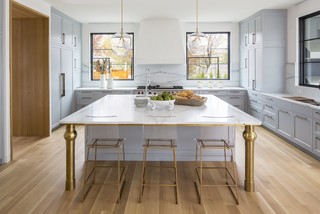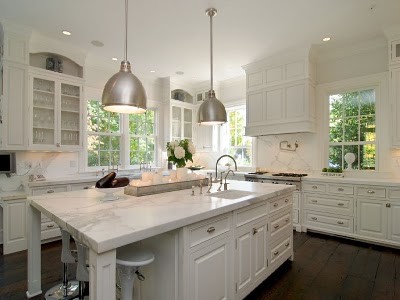Update Your Kitchen's Visual with Costs Legs For Kitchen Island
Update Your Kitchen's Visual with Costs Legs For Kitchen Island
Blog Article
Crucial Aspects to Consider When Picking Legs For Cooking Area Island
Selecting the suitable legs for a kitchen area island entails a mindful analysis of numerous variables that can considerably influence both functionality and visual appeal. As we check out these components, it becomes clear that each decision can have far-reaching ramifications for the general kitchen experience.
Product Options
When selecting legs for a cooking area island, understanding the different product choices is necessary for accomplishing both visual allure and architectural integrity (Legs For Kitchen Island). The choice of product significantly influences not just the durability of the island but likewise its general design and performance
Metal legs, commonly made from stainless steel or functioned iron, contribute a commercial and modern-day feeling while making sure longevity and security. These materials are immune to use and can sustain considerable weight, making them ideal for bigger islands.
Another alternative is engineered materials, like MDF or plywood, which can be much more cost-efficient while still using a series of finishes. Nevertheless, they may not offer the same level of stability as strong wood or metal. Materials such as acrylic or glass can produce a modern look, though they might need extra support to guarantee stability.
Inevitably, the selection of material for kitchen island legs must straighten with the desired performance and the general style of the kitchen.
Style and Style

When considering style, the form and surface of the legs are crucial. Conical legs can supply a sense of agility and style, while thicker, extra robust legs can communicate stamina and stability. Additionally, the coating-- be it painted, discolored, or natural-- should enhance the cabinetry and counter top products to create a unified look.
Furthermore, the layout of the legs can likewise show individual taste. Custom-made or attractive legs, such as those including complex carvings or one-of-a-kind geometric shapes, can function as prime focus, adding personality and personality to the kitchen area. Ultimately, the right choice will certainly not only boost functionality however likewise elevate the aesthetic allure, making the kitchen island a standout function of the home.
Elevation Factors To Consider
Selecting the appropriate elevation for kitchen area island legs is essential, as it straight affects both functionality and comfort. The basic elevation for a kitchen island typically varies from 36 to 42 inches, aligning with typical countertop heights.

It is also crucial to represent users' heights and choices. Tailoring the elevation can guarantee a comfy experience for all household participants, making the kitchen island an extra satisfying and functional space.
Weight Assistance
Making certain appropriate weight support for kitchen area island legs is vital for both security and functionality. The cooking area island commonly serves several purposes, including food prep work, dining, and extra storage space, demanding a robust assistance framework. When choosing legs, it is critical to consider the general weight capacity required based on the island's meant usage and the products that will be put on it.
The option of material for the legs plays a significant duty in their weight-bearing capacities. Strong timber, steel, and heavy-duty composites normally give superior strength compared to lighter materials. In addition, the layout of the legs-- whether they are right, tapered, or have a pedestal type-- can affect their capability to disperse weight efficiently throughout the structure.
Always consult the manufacturer's requirements pertaining to tons restrictions to guarantee that the legs can maintain the designated weight without jeopardizing safety. In summary, selecting kitchen island legs with appropriate weight assistance is necessary for producing a risk-free and useful culinary area.
Installation and Upkeep
Proper installment and upkeep of kitchen area island legs are important for making sure durability and security. This commonly involves safeguarding the legs to the island base using appropriate fasteners, making sure that the legs are degree and lined up.
Once set up, routine upkeep is needed to maintain the integrity and look of the legs - Legs For Kitchen Island. For wooden legs, routine cleansing with a wet cloth and application of ideal timber gloss can stop wetness damages and maintain their surface. Steel legs might call for a gentle cleaning service to get rid of grease and gunk, complied with by linked here a completely dry cloth to stop rust development
In addition, check the legs consistently for signs of wear or damages, such as cracks or loosened joints. Tightening screws or screws as needed can additionally extend the life expectancy of the legs. By adhering to these installation and upkeep techniques, home owners can make sure that their kitchen area island remains strong and aesthetically appealing for years to come.
Verdict

Visual comprehensibility is critical in choosing the style and design of legs for a kitchen area island, as these components substantially influence the total atmosphere of the area. Tapered legs can give a sense of lightness and style, while thicker, extra robust legs can share strength and security.Choosing the ideal height for kitchen island legs is essential, as it directly affects both performance and comfort. In summary, picking cooking area island legs with ample weight support is necessary for developing a secure and useful cooking space.
In verdict, picking legs for a kitchen island necessitates cautious factor to consider of various aspects, including product alternatives, design, elevation, weight assistance, and installment.
Report this page